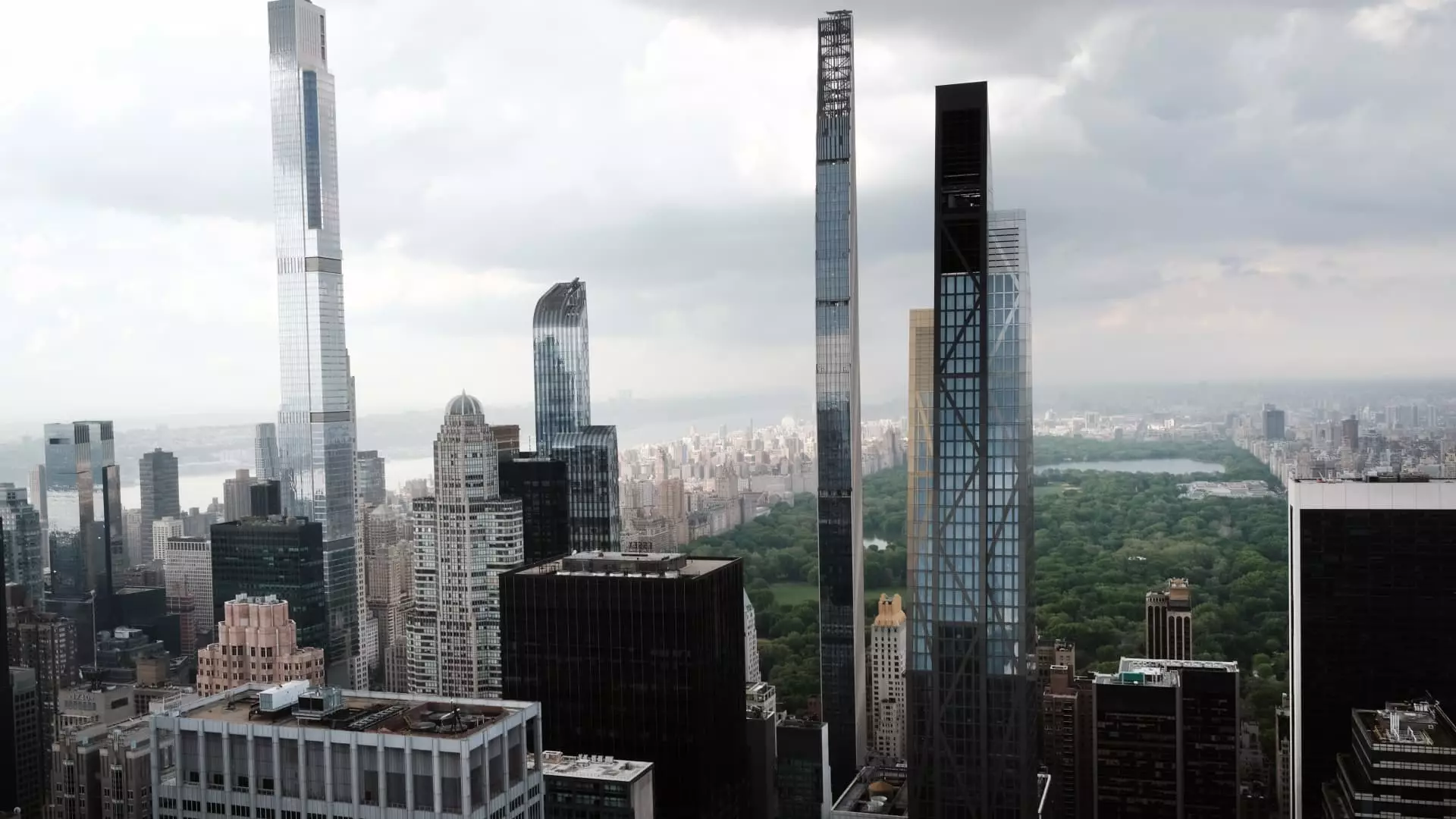In a remarkable turn of events, the Manhattan real estate market witnessed a staggering 29% surge in apartment sales in the first quarter compared to the previous year. This growth comes at a time when many markets are grappling with volatility, further illustrating the divergence in behaviors between the wealthy and the broader economic landscape. The number of closed sales climbed to 2,560, up from 1,988 recorded last year, according to a report from Miller Samuel and Douglas Elliman, revealing that the affluent are pivoting towards real estate as a reliable asset class amidst stock market turmoil.
The driving force behind this boom is decidedly the high-end segment, where luxury properties are receiving unprecedented attention. The total value of apartment sales reached an impressive $5.7 billion—a remarkable 56% increase unlike any other time in recent memory. It’s evident that the ultra-wealthy are leveraging their financial prowess to snap up high-ticket properties, with sales of apartments priced over $5 million skyrocketing by nearly 49%. The concept of a safe haven for capital has never been more resonant, as individuals and families accumulate wealth and seek to diversify their investment portfolios, demonstrating a clear vote of confidence in the Manhattan luxury market.
Cash is King: The Power of All-Cash Transactions
An astonishing 58% of transactions in the current quarter were made in cash, a figure that paints a compelling picture of the economic realities faced by middle-class Americans who may still be tethered to mortgage crises and interest rate fluctuations. Among properties priced above $3 million, the cash transactions soared to a dizzying 90%. This phenomenon reflects the prevailing financial landscape where high-net-worth individuals, largely insulated from rising interest rates, are taking full advantage of available cash to invest in luxurious city living.
Brokers have identified the “mid-market” segment—apartments priced between $1 million and $3 million—as the weak link in this thriving real estate chain. Sales in this category fell by 10%, a decline that underscores the widening gap between the affluent and the average buyer. In contrast, more affordable apartments priced between $500,000 and $1 million displayed stronger performance, hinting at an ongoing shift in demand towards more financially accessible options.
Macro Forces at Play: The Shift from Stocks to Real Estate
The intertwining of Manhattan’s real estate market with stock dynamics has oftentimes dictated trends in sales and valuations. However, a discernible schism seems to be emerging; real estate is increasingly becoming an attractive alternative for investors wary of the uncertain stock market outlook. As affluent individuals reassess their strategies to safeguard their wealth, fine properties in desirable locations like Manhattan are becoming more appealing.
The urgency to return to urban centers has also been driven by back-to-office mandates from major employers. The influx of wealthy “boomerang” buyers—individuals who fled to sunnier locales during the pandemic only to recognize the value of their urban roots—further adds muscle to this fluctuating market. According to real estate professionals, New York City is evolving into a preferred destination as these affluent individuals migrate back from beachside states like Florida and from glamour cities such as Los Angeles, thereby boosting demand further.
The so-called “great wealth transfer,” wherein trillions of dollars are transitioning from baby boomers to their descendants, is also pivotal to understanding this market’s dynamics. Younger generations, armed with trust funds and family wealth, are entered into the real estate arena with the intent of establishing tangible legacies. The rise in activity from family offices looking to invest in real estate foreshadows a promising forecast for long-term stability within Manhattan’s luxury segment.
Looking Ahead: Numbers That Don’t Lie
It’s essential to note that the transactions completed in the first quarter were likely negotiated long before their execution, with significant economic uncertainty manifesting as late as March. While there’s a prevalent sense of optimism resulting from the 29% increase in sales, a 1.1% improvement over the decade-long average is a reminder that volatility still looms. Nonetheless, goodwill remains high, especially among luxury buyers, as data indicates that signed contracts for apartments over $10 million tripled in March, a positive indicator of sustained interest.
The metric of future sales—signed contracts—illustrates that the Manhattan luxury market is thriving, buoyed by confidence and wealth retention strategies. While the average consumer grapples with rising living costs and fluctuating mortgage rates, Manhattan’s elite appear to be thriving economically, creating a two-tier landscape that demands our attention. The current real estate wave is not merely a passing trend; it’s indicative of broader societal and economic shifts that could reconfigure urban living in the years to come.

